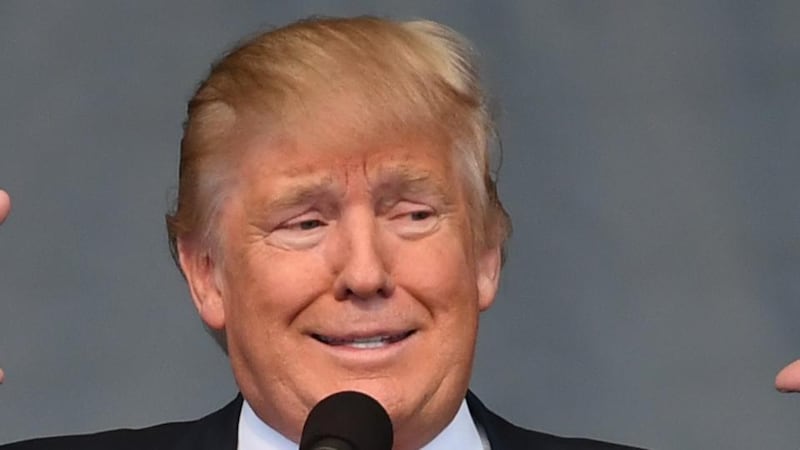Never mind that episode of The Simpsons where they predict that Donald Trump will become president. Today, we are considering the TV show's prescience in constructing a world that contains a miracle cure for baldness.
In Simpson and Delilah, a story from the second series, Homer ingests a product called Dimoxinil. After enjoying lush growth on his hitherto barren pate, he finds himself suddenly lauded by employers, colleagues and passing loose women.
The episode is fiction, but it still tells lies. It employs a class of foul hairist propaganda that has allowed crinicultural blackshirts to maintain unchallenged hegemony over a sleek, tidy minority for centuries. But that may be changing. Surveys on attitudes to hair tell us that the barnet tendency’s reign may be coming to an end.

These musings have been triggered by reports on something called Ruxolitinib. Like Homer’s Dimoxinil, the chemical has been shown to regenerate hair in a small sample of bald people. Something called Tofacitinib looks to have even better results.
As this is a science story in a newspaper, I will now glibly conclude that a cure for male pattern baldness lurks just over the horizon. In fact, no such thing is suggested. The trials work only on patients with alopecia areata, and the vast majority of slapheads (a word I am allowed to reclaim) suffer from androgenic alopecia.
From the top down
Never mind that. A cure for baldness is at hand. Listen to me.
The stories on Ruxolitinib have all presented the information as good news. Yarns such as Simpson and Delilah tell us that bald men are regarded as losers and that chaps with furry tops will inevitably drift to the top.
Over the centuries, an industry powered by unnecessary shame has forwarded the notion of follicle reassignment.
Men have holes bored into their skulls and, in the manner of giant Ken dolls, get other people’s tufts crammed into the resulting bloody cavities. They wear toupees that gleam with the unconvincing artificiality of cut-price gonks.
None of this is quite so depressing as the cult – now diminished – of the comb-over. That peculiar haircut, in which long strands are arranged over the smooth area in the manner of baroque filigree, is a testament to man’s inexhaustible capacity for self-delusion.
A converse of body dysmorphia looks to be at work. Everybody else sees a bald bloke with a greasy cluster of endangered strands slapped across a pink wasteland. The comb-over enthusiast sees Robert Plant at the time of Led Zeppelin II.
One of Dublin’s great landmarks is the “Why Go Bald?” sign. I don’t know, hairist hegemony. Why be a human? Why have feet? Why have self-respect?
Yet a recent study from the University of Pennsylvania (that’s to say, not clickbait nonsense) concludes that men with no hair are perceived to be stronger, authoritative and to have greater leadership potential. “Men whose hair was digitally removed were perceived as more dominant, taller, and stronger than their authentic selves,” noted Albert E Mannes of the Wharton School.
There’s a twist here. Fashion is almost always a menace, but, for chaps with thinning hair, there was, around 1990, a sudden very welcome shift in the zeitgeist. To that point, the properly shaved head was a sign of unimaginable eccentricity.
Think of 1970s detective shows. Ironside used a wheelchair. Baretta had a parrot. Kojak could have lived in a boat or travelled by skateboard, but the producers, instead, allowed him to be entirely bald. (In a few scenes, we actually saw him shave the dome with an electric razor.) That’s how rare such a head was.
Visibly receding
The vogue for shaved craniums – which came at just the right time for this writer – allowed those with high foreheads a route away from comb-overs, managed tufts and monkish rings. Crucially, the Pennsylvania study found that men who, without shaving heads, allowed hairlines to visibly recede were seen as less authoritative than their hairy friends.
It has, for most sensible balding men, now become a right of passage towards the honest life. At some point – rarely before the mid-20s, rarely later than 50 – the receding citizen commits to the full, numbered buzzcut. Liberation is guaranteed. One no longer has to manage horrible undulations of dead protein filament.
Like such excellent perpetual baldies as Robert Duvall, Ben Kingsley and Brian Eno, you will seem to age more slowly than your hairy neighbours. You need never pay a barber again. You can scratch shampoo from the shopping list. Take your Ruxolitinib and shove it.
Who has hair? Donald Trump. That's who. Look at that weave of tangerine seaweed fighting to escape the bacon-shaped head beneath. Would you prefer him over Dwight Eisenhower or Mahatma Gandhi (to name two sharply contrasting baldies)? Of course you wouldn't.
Bald is beautiful. Kiss the dome. Shine the cranium. We have nothing to lose but our plugs.












